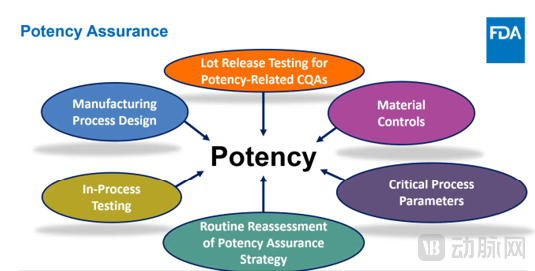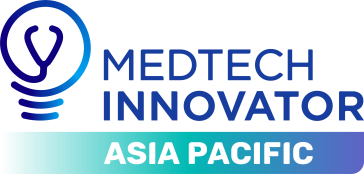2011年,美国食品药品监督管理局 (FDA) 发布了指导文件《细胞和基因治疗产品效力测试》,主要侧重于效力测试方法。从2011年起,细胞和基因治疗 (CGT) 领域已经取得了重大进展。认识到这一发展,FDA 于 2023 年 12 月发布了题为《细胞和基因治疗产品效力保证》的指导草案。这份新文件超越了单纯关注效力测试,而是采取了更全面的方法来确保整个产品生命周期中的效力。

以下是 2011 年指导文件和2023年指导草案之间的一些关键区别:
• 更广泛的方法与单纯的效力测试: 新指南强调了多个方法,包括生产工艺设计和控制、材料控制、中间环节测试和效力批释放试验,以及传统效力测试。
• 逐步实施: 新指南认识到,效力保证策略应该在整个产品开发过程中逐步制定和实施,而不是等到后期阶段才开始。
• 考虑快速临床开发: 新指南承认 CGT 产品快速临床开发的趋势不断增长,并针对此类场景提供了确保效力的具体建议。
一些关键区别的点如下:
• 根据您对产品作用机制、预期临床适应症和给药途径的理解,开发基于质量的目标产品特征 (QTPP)。
• 确定对实现预期治疗效果很重要的与效力相关的关键质量属性 (CQA)。
• 对每个与效力相关的 CQA 进行风险评估:
识别产品效力的风险,并通过分析其可能性和严重性来评估这些风险的重要性。
• 设计生产工艺,以始终如一地生产高效力产品批次。
• 控制可能影响产品效力的关键材料属性和生产工艺参数。
• 实施具有适当验收标准的中间样品检测和批放行测试的效力测试。

• 可能包括理化分析或生物分析;
• 应具有适当的精密度、准确度、特异性和鲁棒性;
• 尽量减少重复分析;
• 尽量减少动物用于效力分析;
• 应定量分析处于风险中的与效力相关的关键质量属性 (CQA)。
效力保证策略通常应包括多个放行试验,至少包括一个生物分析方法,用于测定产品的相对生物活性
效力保证策略可能尚未完全成熟,但仍应制定一个明确的策略,包括:
• 识别产品最初与效力相关的 CQA
• 对与效力相关的 CQA 风险进行评估并采取措施减轻这些风险
在初始 IND 提交中包含以下信息:
• 产品的作用机制和 QTPP,初始与效力相关的 CQA 列表以及这些 CQA 的识别方式。
• 对效力保证策略的描述和理由。
• 在产品开发过程中进一步加强效力保证策略的总体计划 (例如,产品特性分析和效力分析方法开发)。
应该已经制定了全面的效力保证策略:
• 生产工艺和控制策略应根据阶段提供适当的保证,确保产品效力的一致性。
• 控制策略至少包括一种分析,用于测量具有适当验收标准的与效力相关的 CQA。
• 用于测量与效力相关的 CQA 的分析经过验证,证明其性能足以确认 CQA 处于可接受的限度内。
• 确保在储存和给药期间产品的制备,与效力相关的 CQA 保持稳定。
在提交 BLA 之前,应利用所有可用产品质量和临床数据重新评估和完善效力保证策略。
• 对于涉及严重疾病或受伤风险的临床研究,如果产品的效力没有得到充分保证,则可能不合理地将受试者暴露于这些风险之中。
• 如果在临床二期或临床三期研究中没有充分保证效力,则该研究可能因以下原因被认为设计缺陷:
如果不是所有批次都具有实现预期治疗效果的能力,则统计功效会降低。
使用效力未知或控制不当的批次进行研究可能无法提供足够的产品数据来证明商业产品的规范。
• 如何向 FDA 咨询有关效力保证策略的建议。
• 在整个产品开发周期中识别与效力相关的 CQA 并制定效力保证策略的建议。
• 关于开发和使用效力分析以及验收标准的详细建议。
• 为某些 CGT 产品类别推荐的效力分析选择和设计示例。
• 分析控制、验证/确认、参考材料和变更管理方面的建议。
• 效力测试是效力保证的重要方面,但要保证效力,需要更全面,全生命周期的方法。
• CGT 产品制定效力保证策略包括:
定义产品的 QTPP 并识别与效力相关的 CQA;
对每个与效力相关的 CQA 进行风险评估;
采用多方面的方法来降低与效力相关的 CQA 风险,包括针对处于风险中的与效力相关的 CQA 进行测试;
采取生命周期方式进行效力保证 - 在开发过程中获取产品知识时重新评估和完善效力保证策略。
What are the key differences between the newly released CGT product efficacy assurance draft by the FDA and the 2011 document(上下滑动查看更多)
·Implement potency tests with appropriate acceptance criteria for in process and lot release testing.
3.Reassess and refine your potency assurance strategy as you increase your understanding of your product and manufacturing process.
Potency Assurance and acceptance criteria
1.Potency release assays and their acceptance criteria are essential elements of a potency assurance strategy.
·May include physiochemical assays and bioassays.
·Should have suitable precision, accuracy, specificity, and robustness.
·Minimize assay redundancy.
·Minimize the use of animals in potency assays.
·Should quantitate a potency-related CQA that is at-risk.
2.Potency assurance strategies should typically include multiple release assays, including at least one bioassay that measures a relevant biological activity of the product.
Progressive implementations of a potency assurance strategy
1.Your potency assurance strategy may not be fully mature during early development stages, but you should still have a defined potency assurance strategy that includes:
·Identification of initial potency-related CQAs for your product.
·An assessment of risks to potency-related CQAs and measures to mitigate these risks.
2.Include the following information in your initial IND submission:
·Your product’s mechanism of action and QTPP, a list of initial potency-related CQAs and an explanation of how potency-related CQAs were identified.
·A description and justification of your potency assurance strategy.
·General descriptions of your plans for further strengthening your potency assurance strategy during product development (e.g. plan for product characterization and potency assay development.
3.By later stages of clinical development, you should have developed a comprehensive potency assurance strategy:
·Manufacturing process and control strategy should provide phase-appropriate assurance of consistent product potency.
·Control strategy includes at least one assay measuring a potency-related CQA with appropriate acceptance criteria.
·Assays measuring potency-related CQAs are qualified to demonstrate they have adequate performance to confirm that CQAs are within acceptable limits.
·Potency-related CQAs are stable during storage and preparation of the product for administration.
4.Before submitting a BLA, you should use al available product quality and clinical data to reassess and refine your potency assurance strategy.
5.Inadequate potency assurance may lead to a clinical hold:
·For clinical investigations involving significant risk of illness or injury, if the potency of the product is not adequately assured it may be unreasonable to expose subjects to these risks.
·If potency is not adequately assured in a PII or III investigation, the investigation may be considered deficient in design for the following reasons:
oReduced statistical power to detect an effect of the product if not all lots have the capacity to achieve the intended therapeutic effect.
oinvestigations using lots with unknown or indadequately-controleed potency may not provide sufficient product data to justify spefications of the commercial product.
Other topics
Recommendations for requesting advice from FDA regarding your potency assurance strategy.
General advice for identifying potency-related CQAs and developing a potency assurance strategy throughout the product development lifecycle.
Detailed recommendations on the use and development of potency assays and acceptance criteria.
Examples of recommended approaches to potency assay selection and design for some CGT product classes.
Advice on assay control, qualification/validation, reference materials, and change management.
Key points
Potency tests are important aspect of potency assurance, but assuring potency requires a broader approach.
Develop a potency assurance strategy for your CGT product:
·Define your product’s QTPP and identify potency-related CQAs
·Conduct a risk assessment for each potency-related CQA
·Use a multi-faceted approach to reduce risks to potency-related CQAs, including tests for at-risk potency-related CQAs.
·Take a lifecycle approach to potency assurance-reassess and refine your potency assurance strategy as you gain product knowledge during development.


























